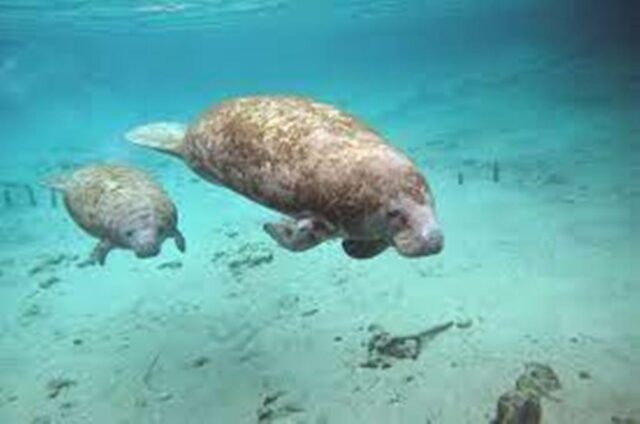Being a Costa Rican national symbol has not saved manatees from the various threats they face. As if that were not enough, the conditions of its habitat make its study complicated by scientists, who have revealed unique findings about this mammal located in the Barra del Colorado Wildlife Refuge.
Bycatch, hunting, increased pollution, and motorboat collisions threaten the remaining populations of this animal. Even the manatee appears on the red list of the danger of extinction.
To improve conservation strategies, the MarViva Foundation, STRI and the Costa Rica Wildlife Foundation (CRWF) joined in a particular study. It seeks to analyze various aspects of this animal. Studying manatees involves various challenges due to topics so varied that they even include the darkness of the waters where they live.

Acoustic mechanisms
“Estimating the manatee population in Costa Rica is like working in the dark. It is a challenge to tell what cannot be seen and this information gap and ignorance must be filled in order to make fundamental decisions.Also based on the science required for the management of this aquatic mammal,” said Jorge Jiménez, Director of MarViva.
As a solution, scientists have turned to acoustic mechanisms. According to experts, each manatee has its own vocalization. Their calls can be linked to specific individuals, offering a way to estimate the number of manatees present in a particular habitat at any given time.
“Although difficult to spot, manatees communicate with each other underwater, emitting screeches or hisses to attract mates, stay in contact with young, mate and warn of threats.
“With these vocalizations, we can identify where, when and who is underwater, and how often they pass through the same place… it’s amazing!” Said Héctor Guzmán, an ecologist at the Smithsonian Tropical Research Institute (STRI) and a co-researcher on the project.
A unique census in nature
The manatee study has been under development for almost a year and the first results have already been received with the identification of 8 individuals. The goal is to estimate the size of the populations of this animal and the current state of its habitats. From there, the protection plan can be refined. Hand in hand with this, work is being carried out with neighboring communities to sensitize them on protection and work together to identify manatees.

